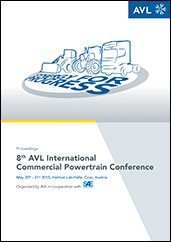Technical Paper
0D-1D Coupling for an Integrated Fuel Economy Control Strategy for a Hybrid Electric Bus
2011-09-11
2011-24-0083
Hybrid electric vehicles (HEVs) are worldwide recognized as one of the best and most immediate opportunities to solve the problems of fuel consumption, pollutant emissions and fossil fuels depletion, thanks to the high reliability of engines and the high efficiencies of motors. Moreover, as transport policy is becoming day by day stricter all over the world, moving people or goods efficiently and cheaply is the goal that all the main automobile manufacturers are trying to reach. In this context, the municipalities are performing their own action plans for public transport and the efforts in realizing high efficiency hybrid electric buses, could be supported by the local policies. For these reasons, the authors intend to propose an efficient control strategy for a hybrid electric bus, with a series architecture for the power-train.

